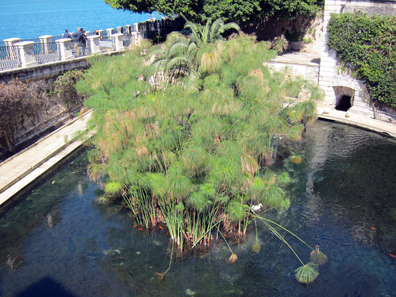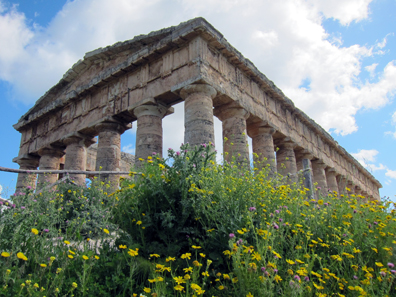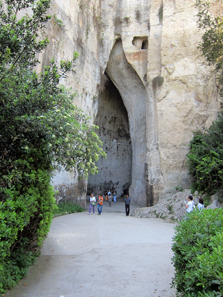translated by Sylvia Karges
After the death of Hieron, Thrasybulus, the oldest male member of the ruling dynasty, took over the reign of Syracuse. Perhaps it was his especially despotic rule, perhaps it simply were the signs of the time, but the inhabitants of Syracuse expelled Thrasybulus around 466. And not only the Syracusans fought against a tyrant. The people of Acragas already had expelled their tyrant at this time and in the cities of Messana and Rhegion the same happened just shortly after the rebellion of Syracuse.
The Fountain of Arethusa in Syracuse. Photo: KW.
Syracuse becomes a democracy and takes control over Sicily
The following years were quite peaceful. Syracuse instituted a “moderate” democracy based on the Athenian model. Moderate, because civil servants were not chosen by drawing lots, but they were elected. In the second half of the 5th century, this new democratic Syracuse armed itself heavily and achieved a certain predominance over the whole of Sicily.
Athens intervenes
In the 30s of the 5th century conflicts arose between the city of Leontini and the by far more powerful city of Syracuse. Leontini knew it could not keep up with the military strong city of Athens, which is why it sent Gorgias, at the time a famous rhetorician, to Athens in order to ask for help. Surprisingly, Athens decided to intervene in the inner Sicilian conflicts. In 427, it sent a small fleet of 20 ships. But that wasn’t enough. It wasn’t possible to deliver the decisive blow against Syracuse. War-weary, the Sicilian cities agreed upon peace in 424, which the Athenians, for better or worse, had to join.
It is said, the mighty Temple of Segesta was built to impress the Athenian envoys. Photo: KW.
Athens intervenes again
But already in the year 416 the Athenians intervened in Sicilian politics again. The cities of Segesta and Selinunte were involved in military confrontations because of border disputes. Selinunte was backed by Syracuse. Segesta did not find any allies on Sicily, which is why the embattled city sent a delegation to Athens to ask for military support in exchange for financial compensation.
Athens was cautious and initially only sent a delegation to Segesta in order to find out whether the descriptions of the city’s incredible wealth were true. The construction of the magnificent, but never finished Temple of Segesta was supposed to have been started to lead the Athenians into believing in the city’s wealth and abundance.
Se non è vero, è ben trovato. And the Athenian envoys were convinced of it. In the popular assembly, the Athenians decided to support Segesta and sent an army under the military commanders of Alcibiades, Lamachus and Nicias.
Herm with the head of Demosthenes from the Athenian agora. Photo: Bibi Saint-Pol / Wikipedia.
The Mutilation of the Hermai
But from the beginning, everything went wrong. Shortly before the fleet was about to leave shore the so called Mutilation of the Hermai occurred: All of the pillars, which were located on the streets, were mutilated during the night. It didn’t take long for the rumor to go around that it was Alcibiades’ doing. Nevertheless, he left together with the fleet.
On Sicily the attack on Syracuse was delayed. The three Athenian generals could not agree on their strategy, which gave Syracuse time to prepare. But for Athens, time wasn’t on its side.
The ear of Dionysius in the limestone quarries of Athens. Photo: KW.
In the limestone quarries
In the fall of 413 Syracuse crushed the morally and military weakened citizen militia of Athens. 7000 men were taken prisoner, the generals were executed, and the rest sent to the notorious limestone quarries. But the famous Alcibiades wasn’t among the prisoners anymore. Shortly after the beginning of the campaign, Athens determined to order him back to stand trial because of the Mutilation of the Hermai. In order to demonstrate unity in front of their allies in Sicily, he was supposed to sail back to Athens on his own ship. Alcibiades jumped at this opportunity to flee and therefore not only escaped his death sentence in Athens, but also the crushing defeat on Sicily.
How the war between Segesta and Selinunte continued and why the Syracusans were again ruled by a tyrant – that will be the topic of the next part.
This article was originally published in MünzenRevue 4/1997.
Please find all parts of this series in our archives.
If you are interested in Sicily, you should certainly check out the numismatic diary “Sicily in full bloom”. Find this series also in our archives.







